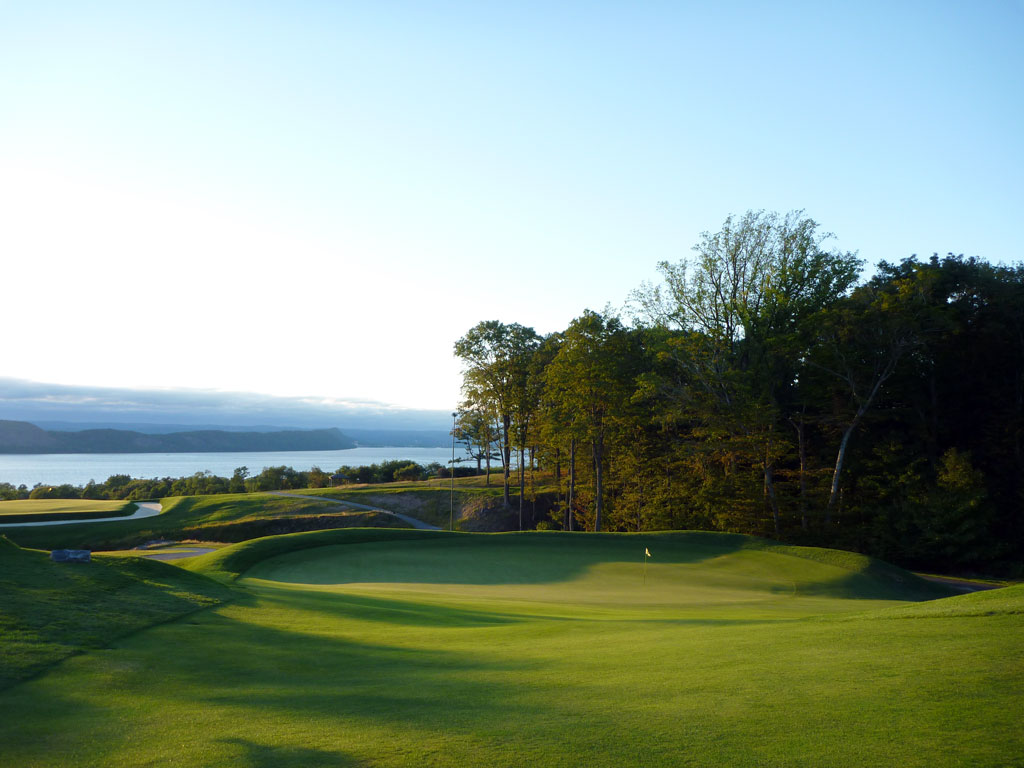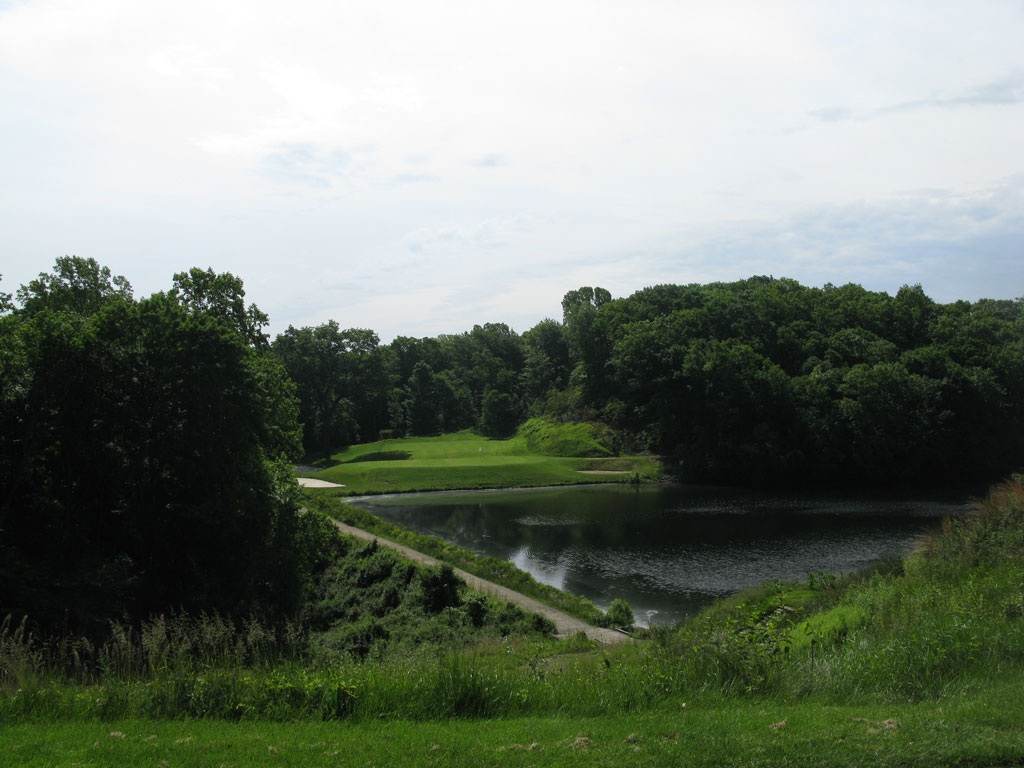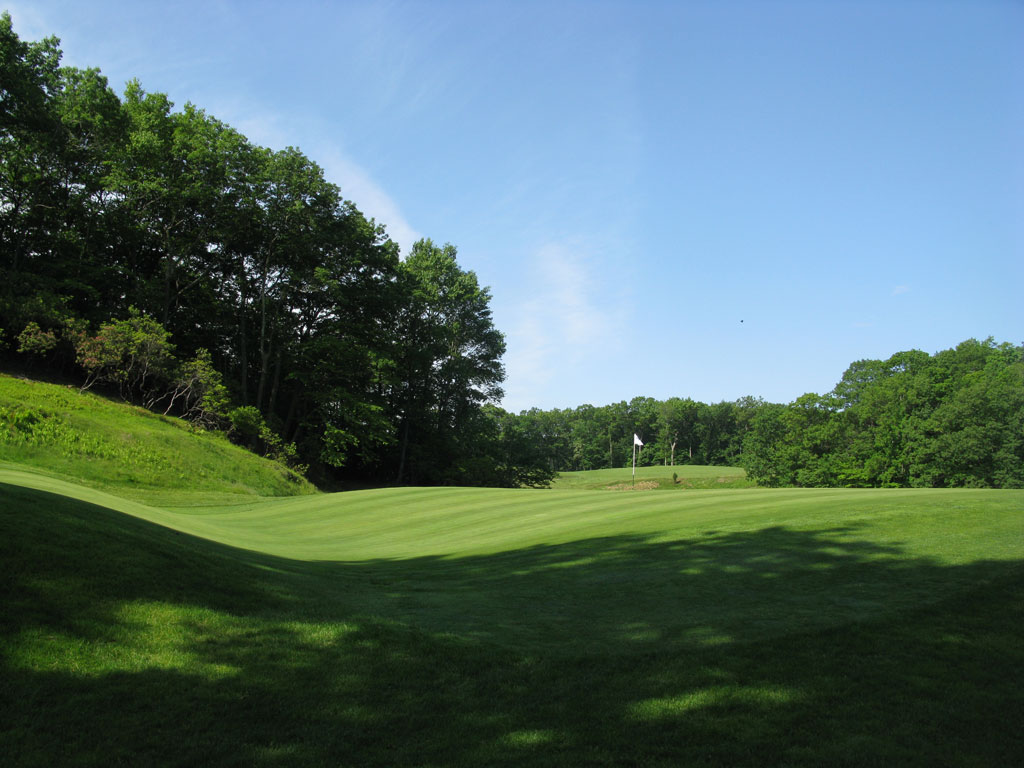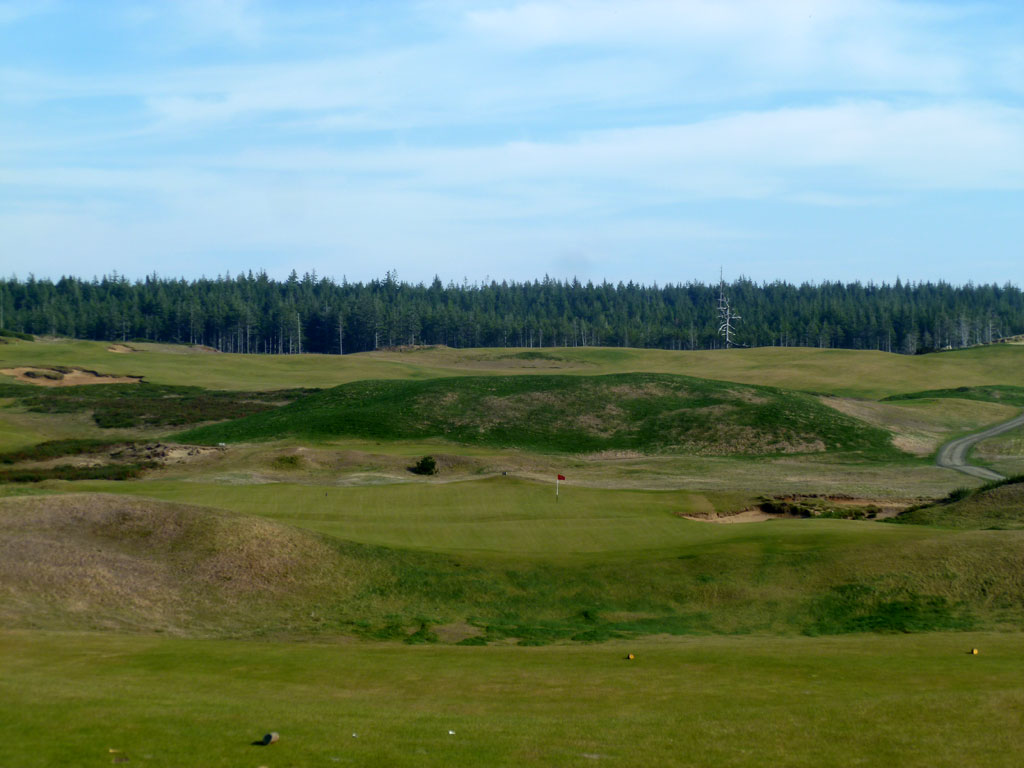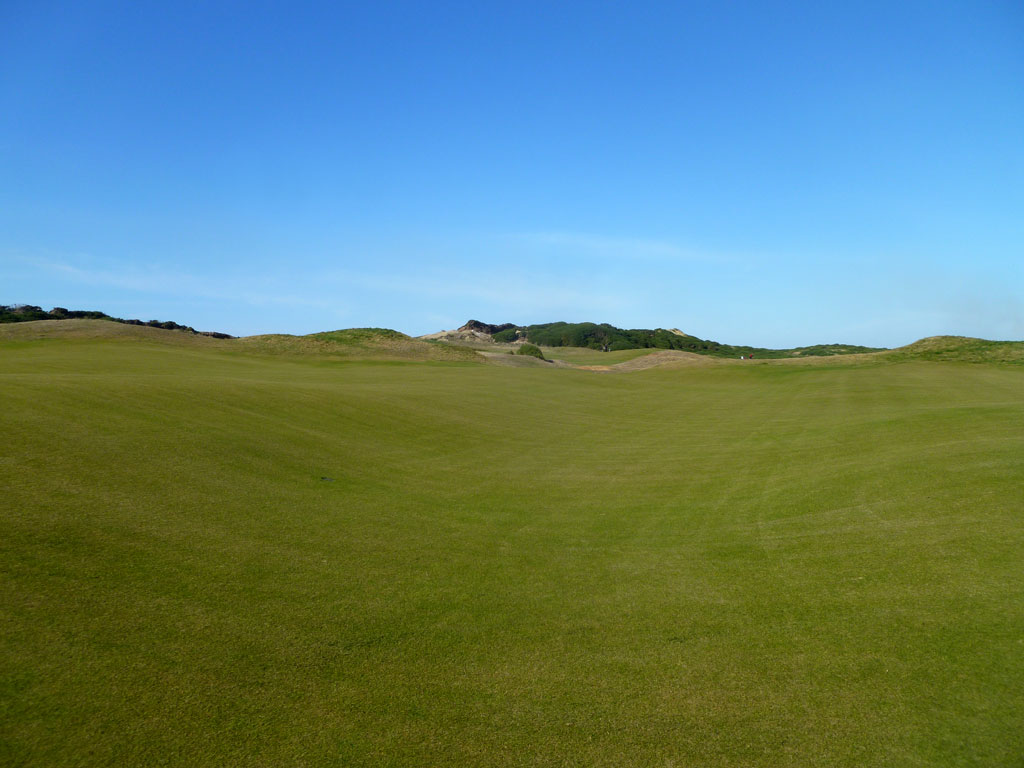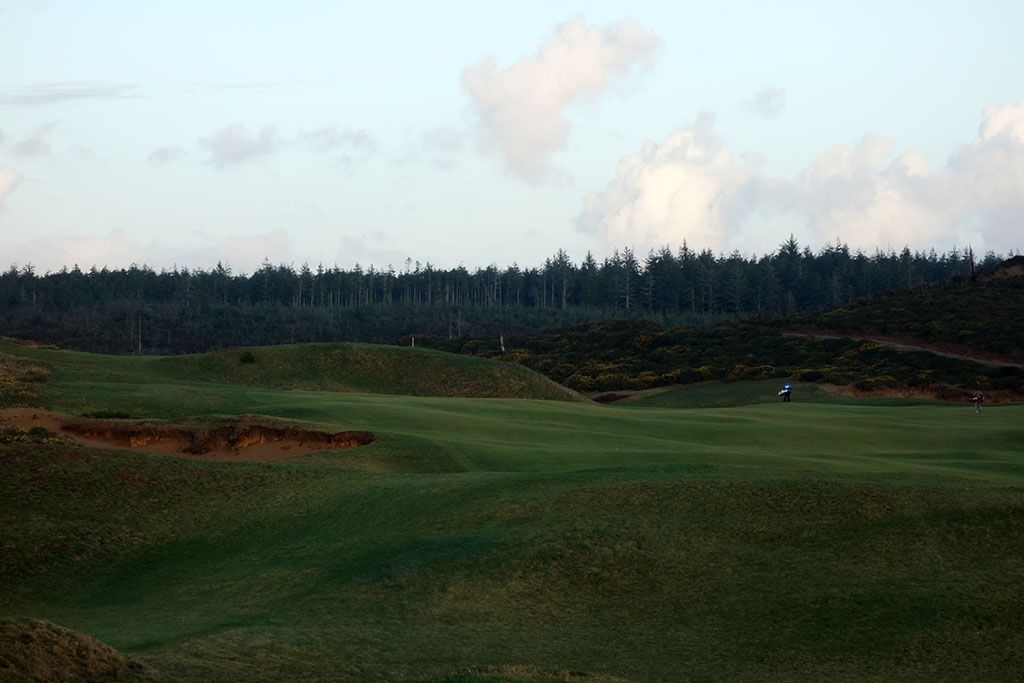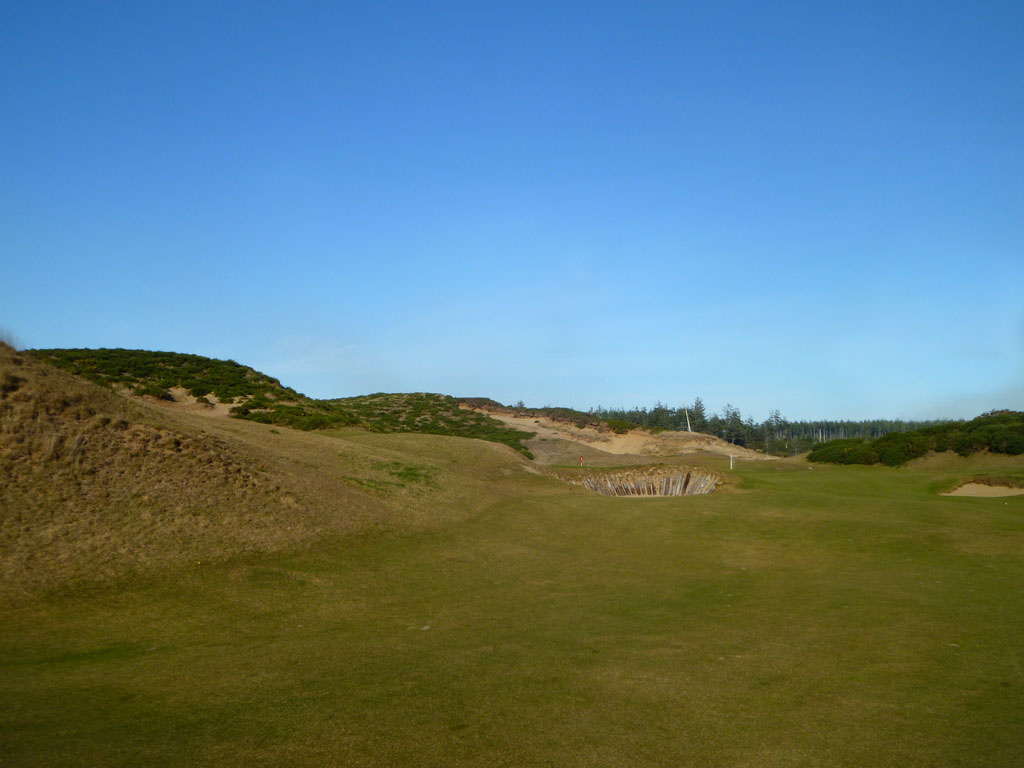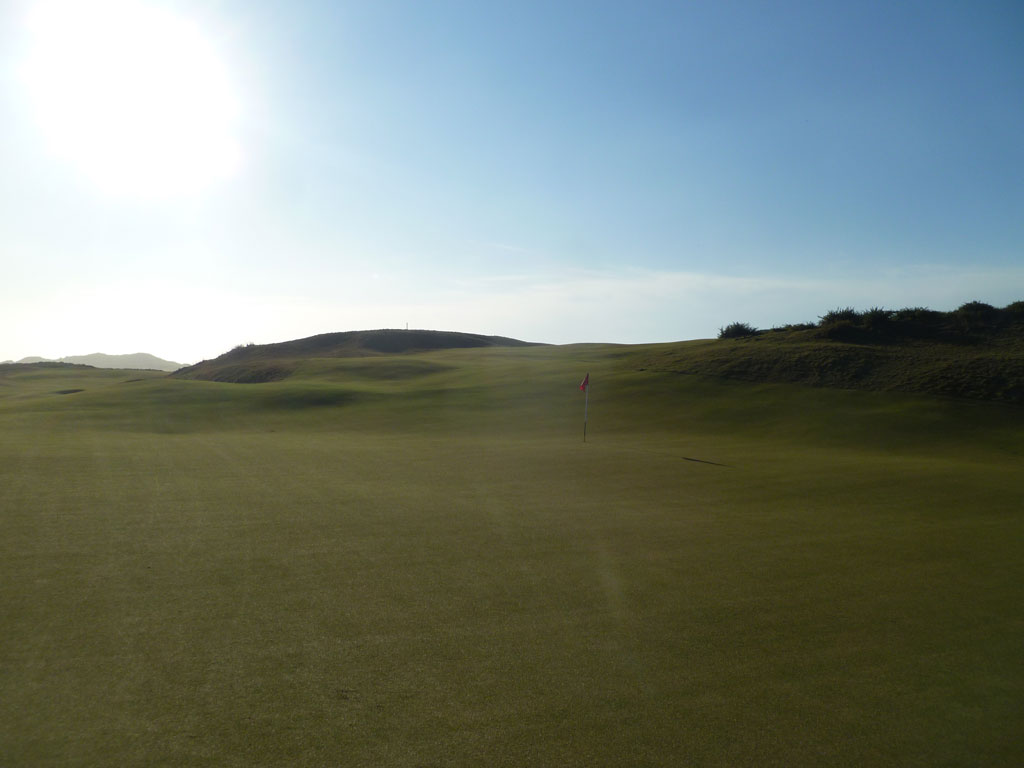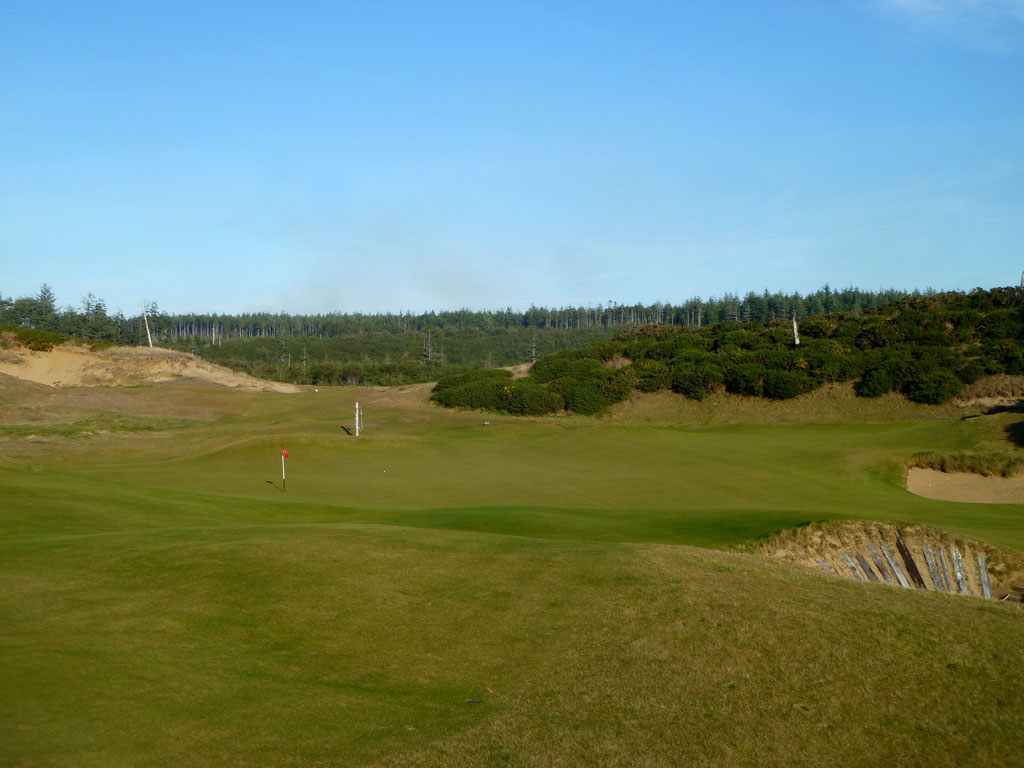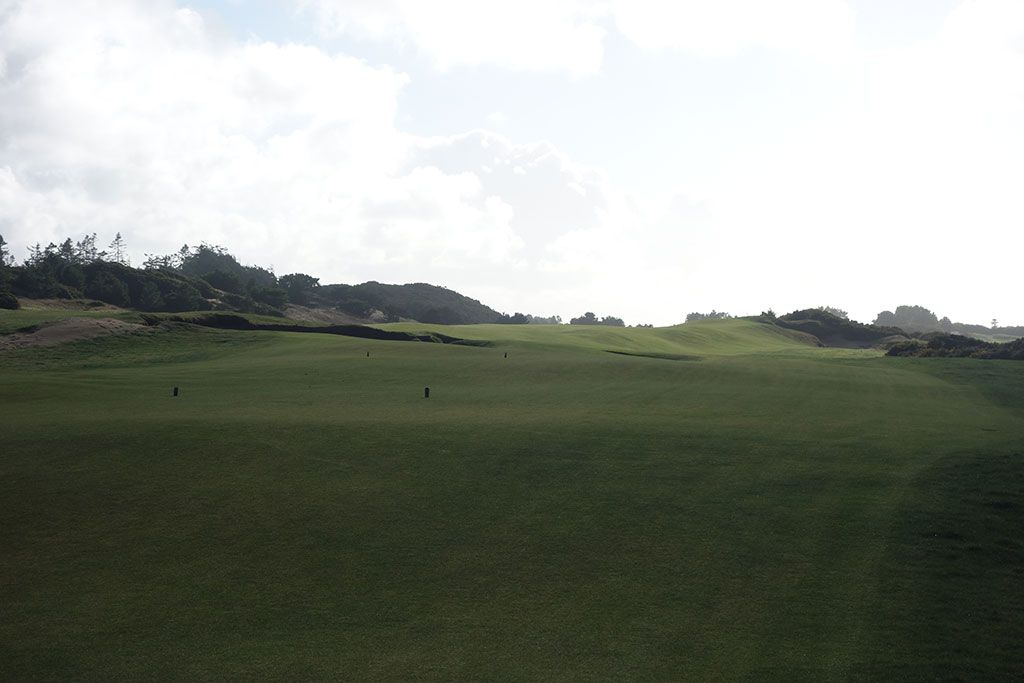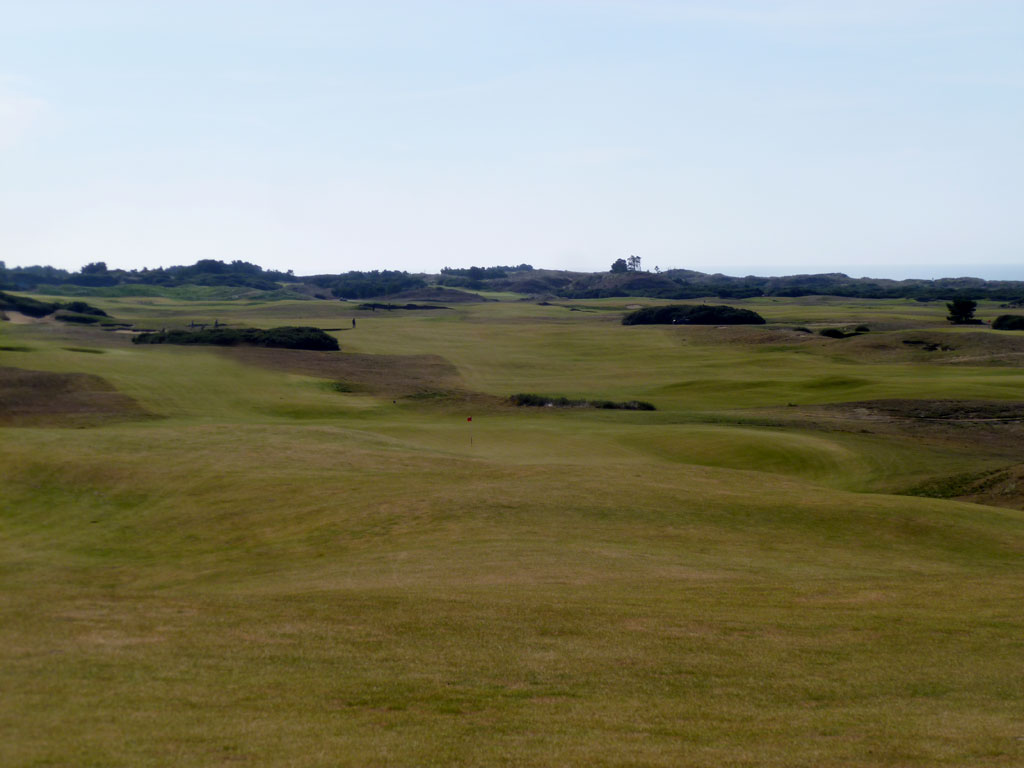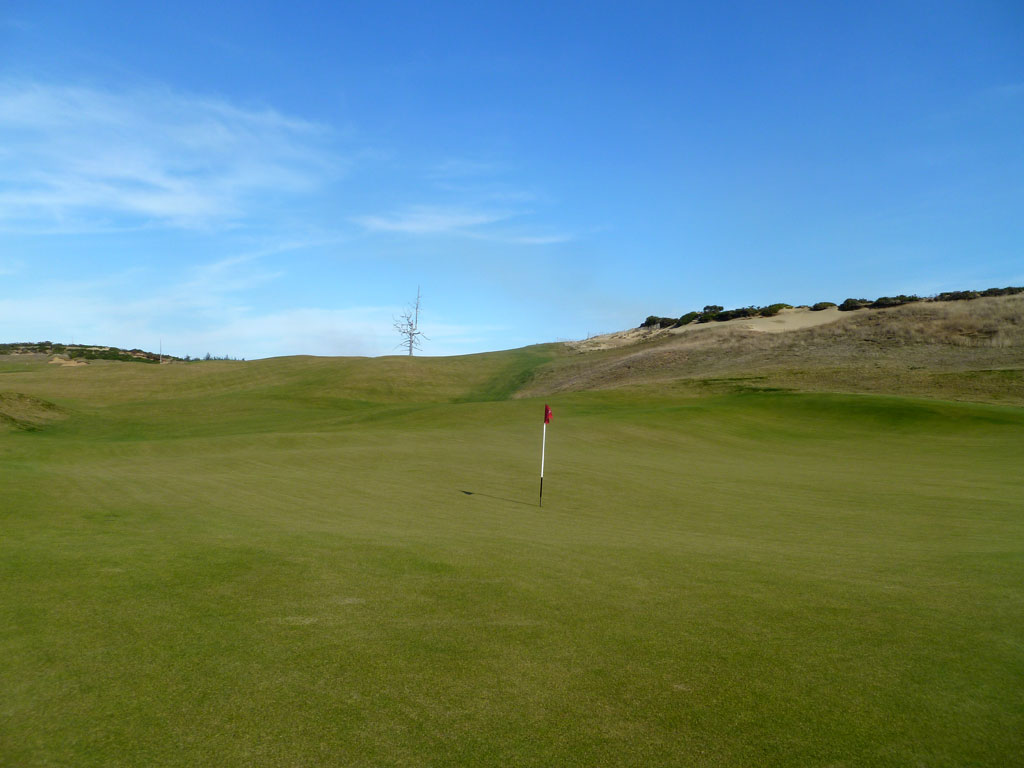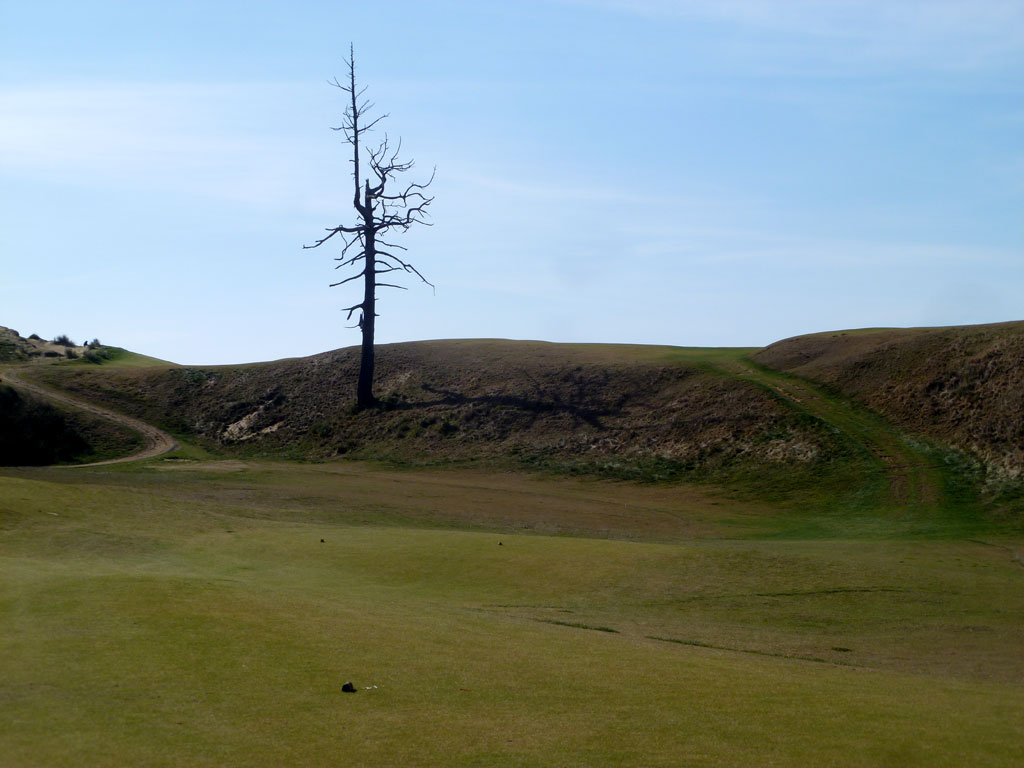Old Macdonald
Article by: Billy SatterfieldThere are four regulation length courses at the resort, Bandon Dunes (1999), Pacific Dunes (2001), Bandon Trails (2005), Old Macdonald (2010), and a 13-hole par three course, Bandon Preserve (2012). Old Macdonald may seem like an odd name for a golf course but it has nothing to do with a man owning a farm or any animals he had on it. Several names were considered before Mike Keiser (developer of Bandon Dunes) and Tom Doak (course designer) settled on Old Macdonald as a tribute to one of America's most revered course designers, Charles Blair Macdonald.
C.B. Macdonald was born in Canada, raised in Chicago, and went to college in St. Andrews Scotland where he caught the golfing bug. He quickly became a great player that frequently played with Young Tom Morris. His time in Scotland offered him exposure to great golf course architecture which provided a foundation for subsequent trips back and forth between America and Great Britain to study golf courses. In 1892 he was asked to design a 7 hole course in conjunction with the World's Fair being hosted in his hometown of Chicago. The course was so popular that he was asked to design the first 18 hole golf course in America, a gem known as Chicago Golf Club, which is also one of five courses that formed the USGA. Up to that point the golf holes found in America had little to no strategy infused in them and C.B. Macdonald became the link that brought golf architecture to the states which is why he and Donald Ross are often each referred to as "The Father of American Golf."
Macdonald studied courses on the other side of the pond, identified what made individual holes great, and then came back to America and would design a version of those great holes in his designs. Many of the holes have individual names like Redan, Biarritz, Long, Short, Alps, Eden, Hog's Back, Cape, Punchbowl, and of course Road (which you should recognize from St. Andrews). The design and strategy of these holes (often referred to as "template holes") are so great that many of them are found time and time again in his designs. I've played several courses designed by C.B. Macdonald and his associate Seth Raynor, and it is amazing how fun they are to play each time even though I've played a similar version of that hole design before. Mike Keiser, who is a member at Chicago Golf Club and National Golf Links of America and are two of Macdonald's most famous designs, asked Tom Doak and Jim Urbina to design a course at Bandon as if they were C.B. Macdonald. Doak and Urbina went to work honoring the late great Macdonald but managed to put their own creative take on the hole design elements. Old Macdonald enjoyed its grand opening July 2-4, 2010 as a way to honor the 100 year anniversary of National Golf Links of America which opened their golf course on those same dates by hosting a tournament organized by the founders. As a side note, NGLA formed in 1908 but it wasn't until 1910 that the golf course was ready and open for play.
Now that you have a little bit of a background behind Old Macdonald, let me highlight a couple of template holes that you'll be enjoying in just 11 short months. Perhaps my favorite template hole is Biarritz which is a design modeled after a par three found at Golf de Biarritz Le Phare in France. Unfortunately this famous green is no longer and sits under housing when the course was redesigned. The original concept of the hole was to play the tee shot with a driver that landed in front of the green, ran across the entry to the green, made it through the 4-5 foot chasm fronting the green, and finished somewhere on the putting surface. I've played some versions of this hole where the entry in front of the chasm is cut to green height and thus could have pins placed there, but other courses stay true to the original intent which is to force players to go through the chasm. Whether pins are allowed in front of the chasm or not, the grass in front and through the chasm is generally cut to green height. The most famous version of this hole is at Yale University. Charles Banks, the construction adviser at Yale, had this to say about Yale's famous 9th hole.
"This is the second of the short holes and is planned for a single shot to the green with the driver. There is a 163 yard water carry from the back tee. The green proper is behind a deep trench in the approach. The approach is about the same size as the green itself and is bunkered heavily both right and left with water jutting in on the right front. The ‘fairway’ is the lake [Griest Pond]. The tees are elevated above the lake. The green is heavily battered [tilted] at the back and the right and the whole psychology of the hole is to let out to the limit. The distance however, is not as great as it seems, due to the water, and a moderate stroke with care is safer than a slam. Correct play for this green is to carry to the near edge of the groove or trench and come upon the green with a roll. The disappearance and reappearance of the ball in the groove adds to the interest of the play. The carry for this play is 180 yards from the back tee. This hole has its original on the Biarritz Course at the famous watering place in France of the same name."
At Old Macdonald, the back tee shot plays from a spectacular tee box located at one of the highest points on the course with the ocean waves crashing behind you 100 feet below. Doak and Urbina decided to put mogul-like undulations on the putting surface in front of the chasm which adds an extra element of surprise and anticipation if your ball is travelling on the ground back to the green. There is no pond to carry at Old Macdonald and the swell in the green is tough to see from the tee but when you get to the putting surface you'll see just how severe it is. Attached is a photo of Yale's 9th hole with a view from the tee and then a view from the side of the green which shows the chasm. You'll notice in the photo that the flag is in the front third of the green; something that many Biarritz holes don't allow so that the swell in the green must be contended with. I'll also attach several photos of Old Macdonald's Biarritz hole (#8) so that you can see the view from the tee and swells in the green. At Old Macdonald all of the pin placements are in the back third of the putting surface beyond the swell; it is never placed in the moguled front third.
Another great hole at Old Macdonald is #16, aka Alps. The original Alps hole is #17 at Prestwick in Scotland which features a large dune that makes the approach shot blind to the green. The best version of Alps in the states is found at National Golf Links of America on the fantastic 3rd hole. With an Alps hole, the dune encroaching the fairway must be carried on the approach shot which sets up a ridiculously high moment of anticipation as you desire to see where your ball has come to rest after watching it soar over the sand dune hiding the green. Did it make the green? Is it a kick in birdie? Will I find it in a bunker? If the anticipation is too much to handle, you have the option at Old Macdonald to play your tee shot to the far right side of the fairway where a view of the green is afforded but the cost of vision is length since you will be adding 40 yards to your approach shot and bring a deep railroad-tie bunker into play by going that direction. Attached is a photo of the 3rd hole at NGLA. The large bunker in the hillside surrounded by fescue is actually on line with the green. Unlike at Prestwick, Macdonald built a fairway along the hill to allow players to advance the ball up that way and take a shorter approach shot into the green if they weren't able to manage the lengthy second shot over the dune.
At Old Macdonald the tips play 455 yards which sets up a long, blind second shot for most players. I've attached several pictures for you to get a feel for this hole. From the tee you can see the large dune looming in from the left and is in a direct line with the blind green. That dune may not seem that big in the picture, but when you see the photo called "Old Macdonald 16th alps" you'll get a feel for how large that dune is when you see how small the person walking along side it looks. On top of the dune is an aiming pole which you will utilize on your second shot. The photo named "approach" shows the view of the fairway and green when you play right of the dune (the flag is red in the picture). The photo named "back" is taken from the green looking back to the tee which will show you how large of a hill you'll be carrying on your second shot if you are taking the most direct route to the flag. In the picture named "green" you will see a white log pole behind the green. That pole has a bell hanging from it which you ring once all the players have completed the hole so that the group behind you is aware they are clear to hit their approach shots. It is an uncommon feature in America but very common in Europe. Recently I saw this feature at The Dunes at Maui Lani and at Erin Hills though use of the latter bell was abandoned after some holes were redesigned in preparation of hosting the U.S. Open in 2017 (the sissy's at the USGA don't love blind holes like that).
Interestingly the signature hole at Old Macdonald by most estimations is #3 which is an a spin off of one of Macdonald's lesser-known template holes, Sahara. This unique hole tips out at 375 yards but plays much less than that. Players are faced with a decision on how to contend with the large, dead tree looming off the tee. Go to the right? Go to the left? Go over? Go under? Here is a nugget for you. A high draw around the tree will tumble forever down the hill towards the green. I've played this hole twice and drove the green once and was in the rough just off the green the other time. It is a ton of fun climbing the hill and then descending towards the green in anticipation of where your tee shot finished. It isn't like playing many parkland courses where the ball finishes close to where it lands virtually every time. These are FIRM and FAST fairways that are heavily contoured which will seemingly take your golf ball on a roller coaster ride. Getting on one side of a hill in the fairway one day can be a totally different result then getting pushed off the other side of the same hill the next day. The last photo shows just how large the tree in front of the tee box is; the people in the photo are tiny! The photo with the flag in the foreground and tree in the background is one I took looking from the green back towards the tee. You can see how steep the fairway is and why it will be possible to poke a smooth little 375 yard drive on this hole.
Old Macdonald has quickly developed the reputation as the most fun course on the property. What will you think after teeing it up at Bandon Dunes Resort?
